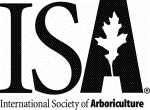
| Current Articles |
| Browse Archives |
| Search |
| Contact Us |
| AUF Home |
 |
Arboriculture & Urban Forestry Online
| Volume 35, Issue 1 —
January 2009
https://www.isa-arbor.com/Publications/Arboriculture-Urban-Forestry |
|
Managing Diplodia Tip Blight of Landscape Austrian Pines (View PDF) John R. Hartman , Lisa J. Vaillancourt , Jennifer L. Flowers , and Amy M. Bateman Abstract: A long-term survey of 449 Austrian pines growing on the University of Kentucky campus revealed that Diplodia tip blight disease killed 84% of the trees during a 15-year period and that the pines developed increasing levels of disease as they aged. Treatments consisting of the fungicides oxycarboxin, debacarb, or tebuconazole or water were injected into the lower trunk and root flare of individual trees in a block of mature, diseased pines for 4 years. The fungicide treatments did not significantly affect disease levels. The causal fungus could be isolated readily from diseased and symptomless shoots regardless of the treatment. Diplodia pinea was very sensitive to tebuconazole and debacarb in in vitro fungicide tests. Basal drenches with paclobutrazol affected shoot growth but did not significantly reduce tip blight disease levels or tree mortality. Under midsouth United States climate conditions, Diplodia tip blight of Austrian pines is destructive and very difficult to manage. Keywords: Diplodia pinea ; fungicide basal drench; fungicide injection; Pinus nigra ; Sphaeropsis sapinea ; Sphaeropsis tip blight. |
Current Articles
| Browse Archives | Search | AUF Home | ISA Home
| Get Acrobat